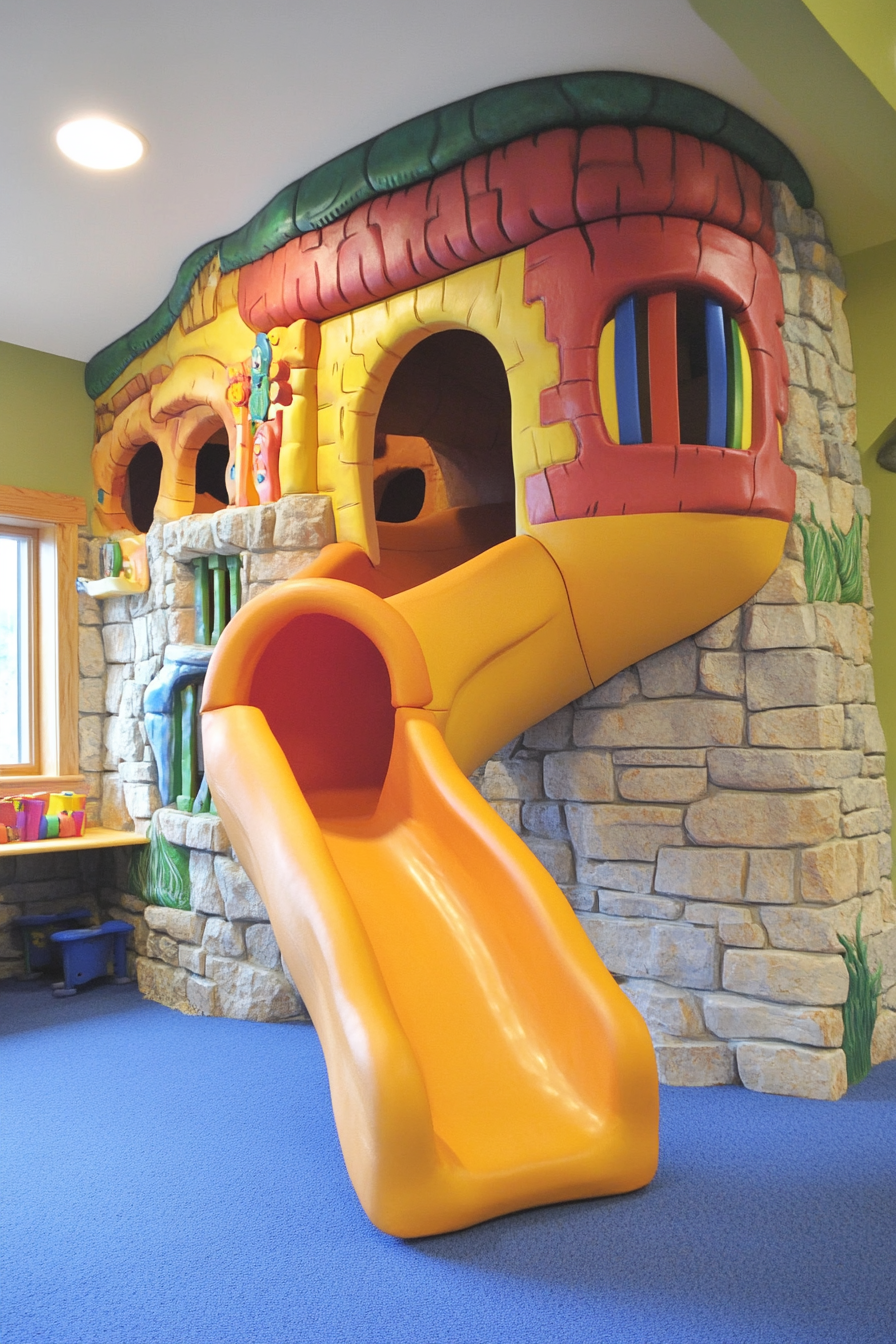I remember the moment I realized my kids needed their own special space.
It was a rainy Saturday afternoon.
The living room looked like a toy store had exploded, with tiny cars under the couch, art supplies scattered across the coffee table, and a train track running dangerously close to the TV stand.
I stepped on a stray LEGO piece, let out a yelp, and thought, There has to be a better way.
That’s when I decided it was time to create a dedicated playroom for my kids—a place where they could explore, imagine, and be as messy as they wanted without taking over the rest of the house.
✨Click to Get My 101 FREE Designer Room Ideas
Create a Reading Nook

If your kids love to curl up with a book (or you’re trying to encourage them), a reading nook is a must.
Find a cozy corner of the room and make it inviting.
You can use a small tent, a teepee, or even a cozy chair with lots of plush pillows.

Add a soft rug beneath it to make it feel extra comfy.
Install low shelves or bins to store books within your child’s reach.
This not only helps them feel independent but also encourages them to pick out and read books on their own.
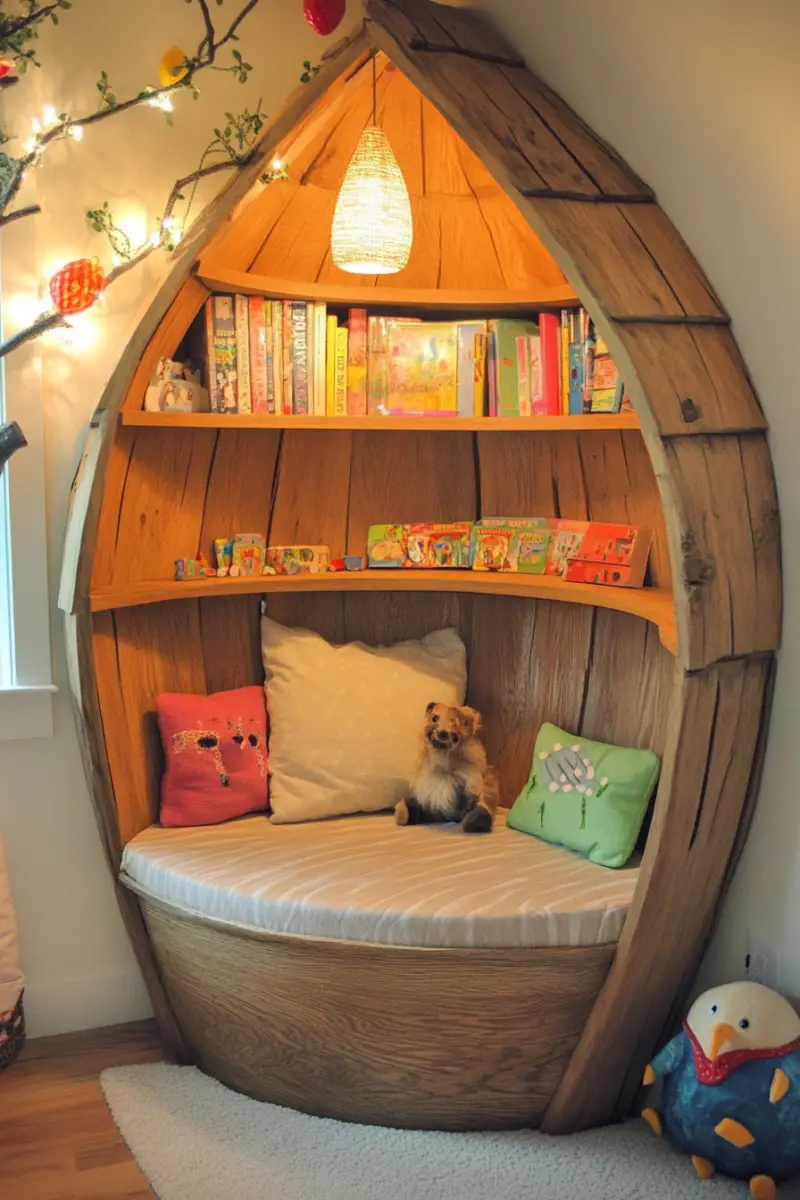
Consider stringing up some fairy lights or adding a small lamp for ambiance.
The lighting makes all the difference in making the nook feel magical.

If you have multiple kids, you can create a shared reading space with a long bench or a couple of bean bags.
Just make sure there’s enough room for everyone to get cozy.

To personalize the nook, let your kids help decorate it.
They can pick out their favorite posters, hang their artwork, or choose the pillows and blankets.

This way, they’ll feel like it’s truly their space.
Install a Climbing Wall


Got a little monkey at home?
A climbing wall can be an amazing addition to your playroom.
It’s a fantastic way to burn off energy, improve motor skills, and build confidence.
You don’t need a ton of space for this—just one sturdy wall will do.


Look for a climbing wall kit online or at a hardware store.
These kits come with handholds and wall anchors that you can install yourself.
Make sure you use a solid, weight-bearing wall, and follow the instructions carefully to ensure safety.
To keep it safe, place a thick crash mat or soft padded flooring underneath the climbing area.
This will cushion any falls and give you peace of mind.
Consider painting the climbing wall in a fun color or adding a mountain or jungle mural to set the scene.
You can even create a simple obstacle course by combining the climbing wall with other elements, like a rope ladder or monkey bars.
If your kids are younger, start with smaller handholds and keep the wall low.
As they grow older and their skills improve, you can adjust the setup to make it more challenging.
Add a Chalkboard or Whiteboard Wall


A chalkboard or whiteboard wall is a great way to inspire creativity without creating a mess.
Choose one wall in the playroom and paint it with chalkboard paint or install a large whiteboard.
Chalkboard paint is easy to apply, and you can find it at most home improvement stores.
Once it’s dry, your kids can draw, write, and doodle to their heart’s content.

If you go the whiteboard route, use colorful dry-erase markers to make it even more fun.
Keep a basket or shelf nearby to store chalk or markers so everything stays organized.
This setup is perfect for drawing games, practicing letters and numbers, or even creating a “menu” for a pretend restaurant.
You can also use the wall for practical purposes, like writing down a weekly schedule, chore chart, or fun countdowns to birthdays or holidays.
Encourage your kids to take ownership of the space by letting them decorate or add their own themes.
Whether it’s a chalkboard zoo or a whiteboard galaxy, the possibilities are endless.
Plus, when they’re done, you can just wipe it clean and start fresh.
Design a Dress-Up Station


Every kid loves to play pretend, and a dress-up station is the perfect way to encourage imaginative play.
Set up a small wardrobe or clothing rack in the playroom.
Fill it with costumes, hats, scarves, and accessories your kids can use for dress-up.


You don’t need to spend a fortune—thrift stores and clearance racks are great places to find fun items.
Hang a mirror (at your child’s height) nearby so they can see themselves in their outfits.
This adds an extra layer of fun and encourages them to get creative with their looks.
Organize the costumes by category—princess dresses, superhero capes, animal costumes, etc.—so they’re easy to find.
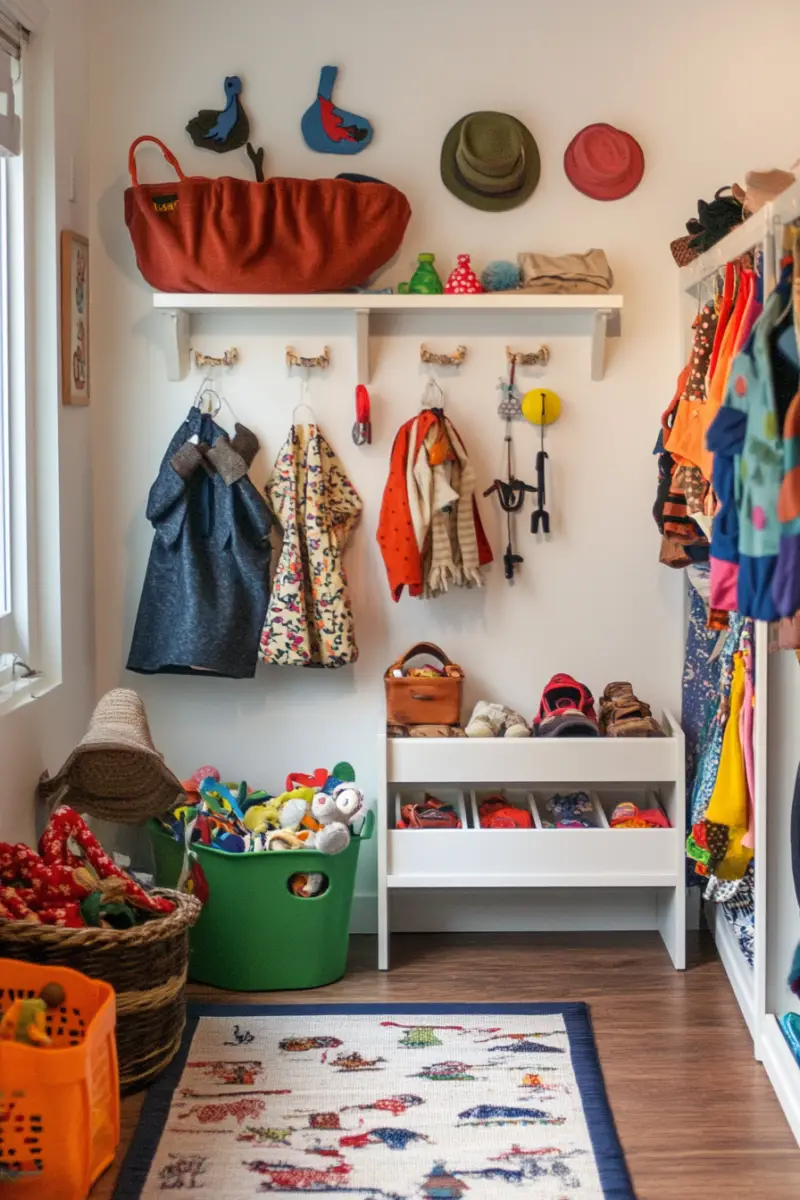

Use labeled bins or baskets for smaller items like crowns, masks, and wands.
Consider adding a small stage or performance area in the playroom where they can show off their costumes and put on “shows” for the family.
This setup not only sparks imagination but also builds confidence and social skills.
Encourage your kids to come up with their own stories and characters—it’s amazing what they’ll create.
✨Click to Get My 101 FREE Designer Room Ideas
Include a Music Corner


Music is a fantastic way for kids to express themselves and learn new skills, so why not create a music corner in the playroom?
You don’t need to invest in expensive instruments—a small collection of kid-friendly options is more than enough.
Start with basics like a toy keyboard, a small drum, a ukulele, a tambourine, or maracas.


If your kids are older, you can introduce more advanced instruments like a beginner’s guitar or a small electric keyboard.
Keep the instruments stored on a shelf or in a basket for easy access.
Add a small stool or chair for instruments that require sitting, like keyboards or guitars.

You could even hang some instruments on the wall for a fun and decorative touch.
If your kids love to dance, include a Bluetooth speaker so they can play their favorite songs and have their own mini dance parties.
For extra fun, add a small karaoke machine or a microphone—they’ll love putting on “concerts” for the family.
A music corner isn’t just about having fun; it’s also a way to build coordination, rhythm, and creativity.
Design a LEGO Building Station


If you’ve ever stepped on a LEGO (and let’s be honest, you probably have), you know the importance of keeping those tiny pieces contained.
A dedicated LEGO station is a game-changer for any playroom.
Start with a sturdy table that’s the right height for your kids to build comfortably.

You can cover the tabletop with LEGO baseplates to create a ready-to-build surface.
Add bins or drawers underneath the table to organize LEGO pieces by color, size, or type.

This not only keeps things tidy but also makes it easier for your kids to find what they need.
If you have wall space, consider installing small shelves to display completed creations—this gives your kids a sense of pride and accomplishment.

For extra inspiration, hang a LEGO-themed poster or artwork above the station.
Encourage your kids to tackle new building challenges, whether it’s constructing a spaceship, a castle, or an entire city.
A LEGO station fosters creativity, problem-solving skills, and hours of focused play.
Add a Mini Kitchen or Grocery Store


Kids love to mimic what they see adults doing, and a mini kitchen or grocery store setup is perfect for imaginative play.
You can buy a play kitchen set or create your own using a small table with some DIY touches.
Stock it with toy pots, pans, utensils, and pretend food.

Don’t forget accessories like a toy microwave, toaster, or cash register if you’re going for the grocery store vibe.
If you have extra wall space, install small shelves to store the “groceries” or hang hooks for utensils.
Add baskets or bins for fruits, veggies, and other food items.

You can even include a little chalkboard to write a “menu” or grocery list.

Encourage your kids to host pretend dinner parties or run their own “restaurant.”
This type of play builds social skills, creativity, and even early math skills as they “price” items or count change.
Arts area

Dedicate a workspace where kids can freely explore art materials like markers, crayons, stickers, colored papers, glitter, glue, etc.
Fully stock the area with supplies to ignite creativity.
Rotate materials monthly to expose kids to new mediums.
Include an easel or flat surface for drawing, painting and crafting.
Low tables also work well for seated activities.
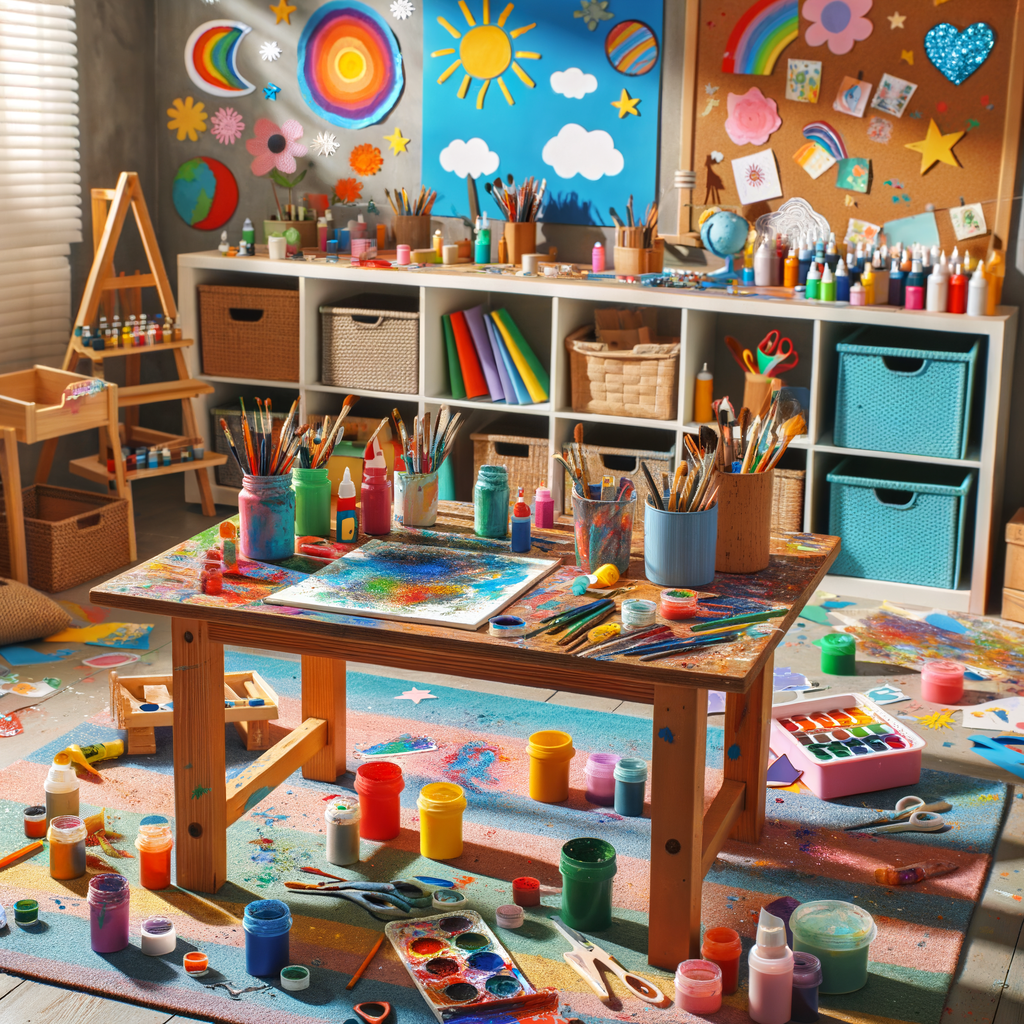
Store supplies neatly within easy reach of children.
Use labeled bins, drawers, or wall-mounted shelves organized by type.
Hang examples of kid art or blank canvas nearby for inspiration.
An empty bulletin board invites works-in-progress.
For messy materials, cover surfaces with disposable tablecloths or craft mats.
Stock the zone with smocks or aprons to protect clothes.
Consider adding a kid-sized potters wheel, sewing machine or other specialized art tools to engage developing skills.
Natural lighting near the arts area provides the best illumination for visual tasks.
Supplement with a clip-on lamp if needed.
A dedicated, well-stocked arts space allows kids to freely explore creativity and make beautiful process-oriented masterpieces.
✨Click to Get My 101 FREE Designer Room Ideas
Foam Mats or Rugs

Add cushioning to the floor for comfort during play.
Foam interlocking mats or plush area rugs soften hard surfaces.
Look for washable, non-toxic materials that are kid-safe.
Foam mats are easy to wipe clean of spills and messes.
Place mats in high-traffic areas like the block/toy zone, art station, or dramatic play area where kids sit a lot.
Consider mats with stimulating textures, prints or shapes to encourage tactile learning and development.
Puzzle piece styles inspire fitting pieces together.
Mats and rugs warm up potentially cold flooring, preventing slips or falls as kids move between surfaces.
They define play zones.
For infants and toddlers, fully covering the floor prevents falls if they stand while holding furniture for stability.
Arrange removable, portable mats for whole-room activities like yoga, dance parties or floor games.
Cushioned flooring adds comfort during play and encourages freedom of movement, creative expression through dance, and physical development.
Foam or fabric floor mats soften hard surfaces, keeping the play space cozy and welcoming for children of all ages.
Chalkboard or dry erase board wall

An interactive writing surface is educational and creatively stimulating.
Kids can draw, write, erase, and start anew.
Mount a 4×6 foot chalkboard or thick acrylic dry erase board at kid height on a wall for easy access.
Stock the ledge below with colorful chalk, erasable markers, and erasers for independent play.
Change colors occasionally.
Consider adding a small shelf or ledge nearby to display illustrations of letters, numbers, shapes for reference during drawing practice.
A writing wall invites playful note leaving between siblings or parents.
Frame message board sections for this.
Chalk art is messier but more tactile for young kids.
Dry erase lets them draw indoors without worry of ruining light colors.
This engaging play surface sparks early writing skills, creativity, problem solving, and entertaining solo or social playtime.
Erase sections periodically to motivate kids to fill the “blank canvas” again and again, improving skills each time.
A writing board wall keeps children occupied and learning through scribbles, drawings, letters, and fun with colors—all with the ease of erasing to start anew.
Storage ottoman or trunks
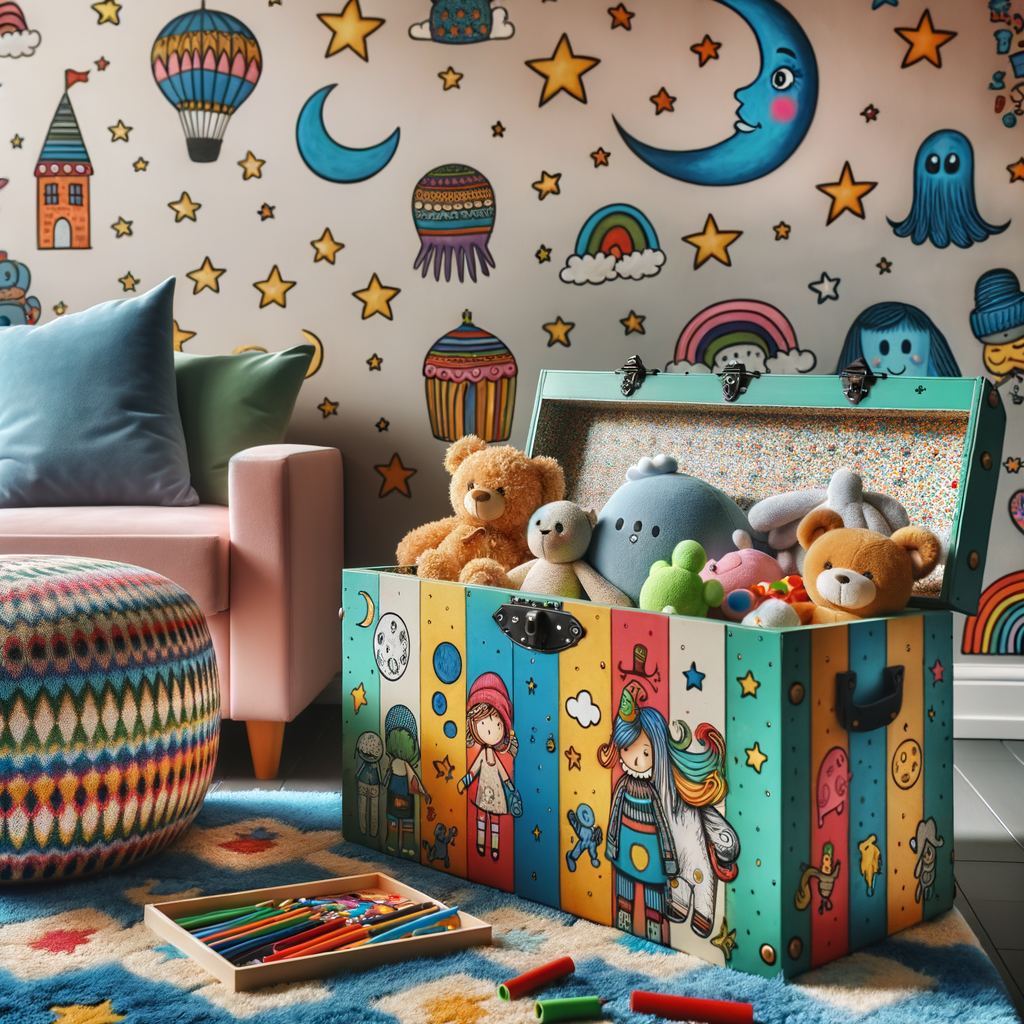
Hidden storage is key for keeping toys orderly yet accessible.
Look for furniture that doubles as seating.
Ottomans and trunks with removable lids let kids stow toys inside while the tops provide extra floor space to sit, build or read.
Upholstered ottomans can corral larger toys while also being soft and comfortable.
Store smaller items in trunks.
Consider decorative options that suit the style like a faux jute orfabric-covered ottoman or antique-inspired wood trunk.
Clearly label storage compartments so kids know where designated toys belong for clean-up.
Use pictures if they can’t read yet.
Add casters under trunks or ottomans for mobility.
This allows toys to travel from room to room as play moves around.
Storage seats double the function of the play area while keeping floor space uncluttered for activities.
Ottomans and trunks hide the visual mess of toys while staying accessible to children.
This encourages independent clean-up.
Toy shelves or racks
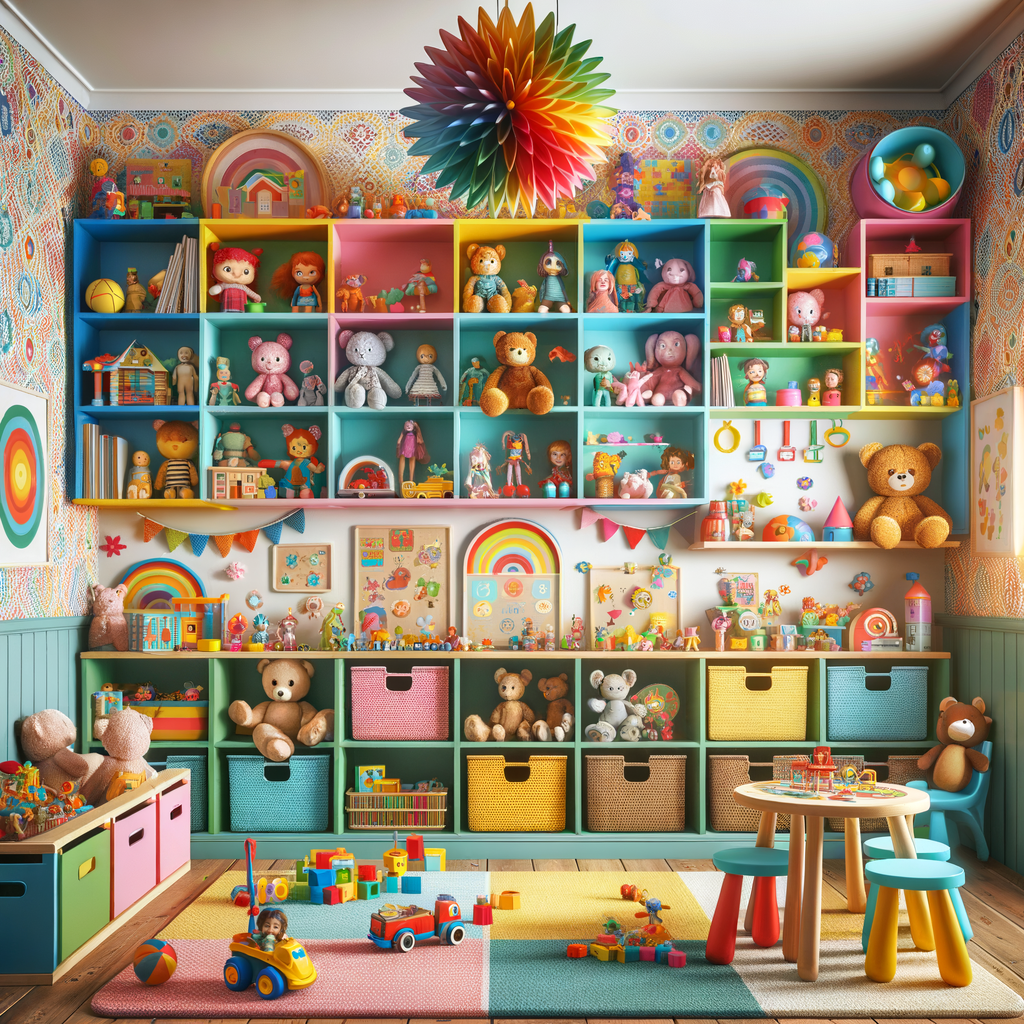
Open shelving or wall-mounted racks provide a home for each toy category while displaying the collection.
Organize by type (books, blocks, cars, dolls etc.), color code toys, or section by development level/age range.
Label baskets or bins on shelves clearly so kids can find what they want and return it efficiently.
Adjust shelf heights to suit the age of the children – lower for toddlers, higher shelves as they grow.
Consider decorative rattan baskets or wicker bins to corral smaller items and display toys attractively.
Rotate toys between shelves, storage and play areas every few weeks to extend interest and prevent boredom.
Vertical toy ladders or multi-level wall shelves maximize the storage space in a room efficiently.
Easy containment and accessibility encourages independent play and clean up.
Kids always know where toys belong.
Open shelving provides a useful home for the playroom collection, while keeping the space organized and tidy for creative chaos.
✨Click to Get My 101 FREE Designer Room Ideas
Playhouse or tent
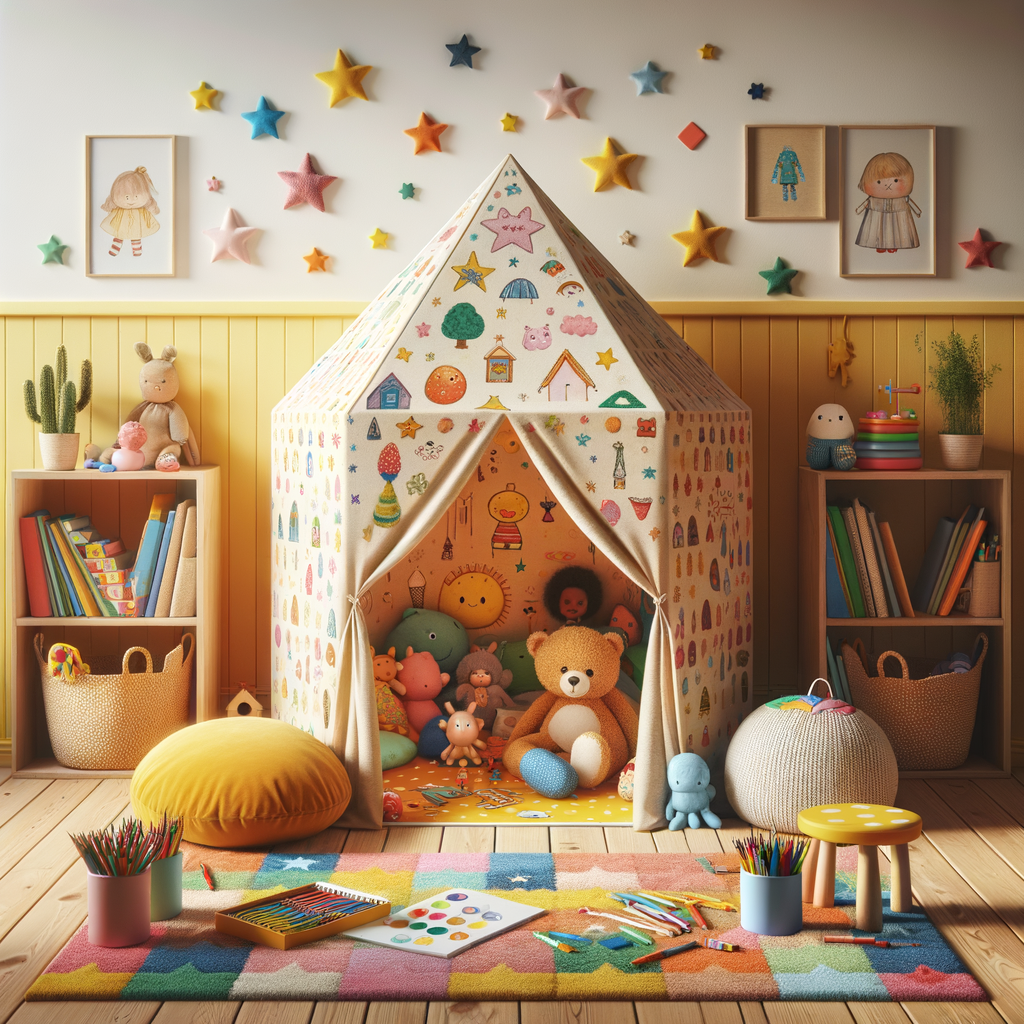
A playhouse provides an enclosed retreat for dramatic indoor or outdoor play.
Pop-up tents also work well indoors.
Look for child-sized playhouses big enough for 1-2 kids to sit comfortably.
Wood or sturdy plastic models hold up best to weather.
Tents give a cozy fort-like feel.
Consider compact pop-up models that are easy for kids to assemble and take down solo.
Stock the space with play kitchen supplies, dress up clothes, stuffed animals or a doll house for imaginative indoor adventures.
Add string lights, lanterns or solar power for nighttime campouts.
Rugs, pillows and books keep it comfy.
Open playhouses make a charming reading nook.
Curtains or plants around tents create a private theater for puppets or stories.
For outdoor play, look for all-weather plastic playhouses tolerant of rain, sun and snow.
A playhouse inspires creativity as a magical oasis for kids to let their imagination run wild through dramatic indoor or outdoor role-play.
Play gym or mat
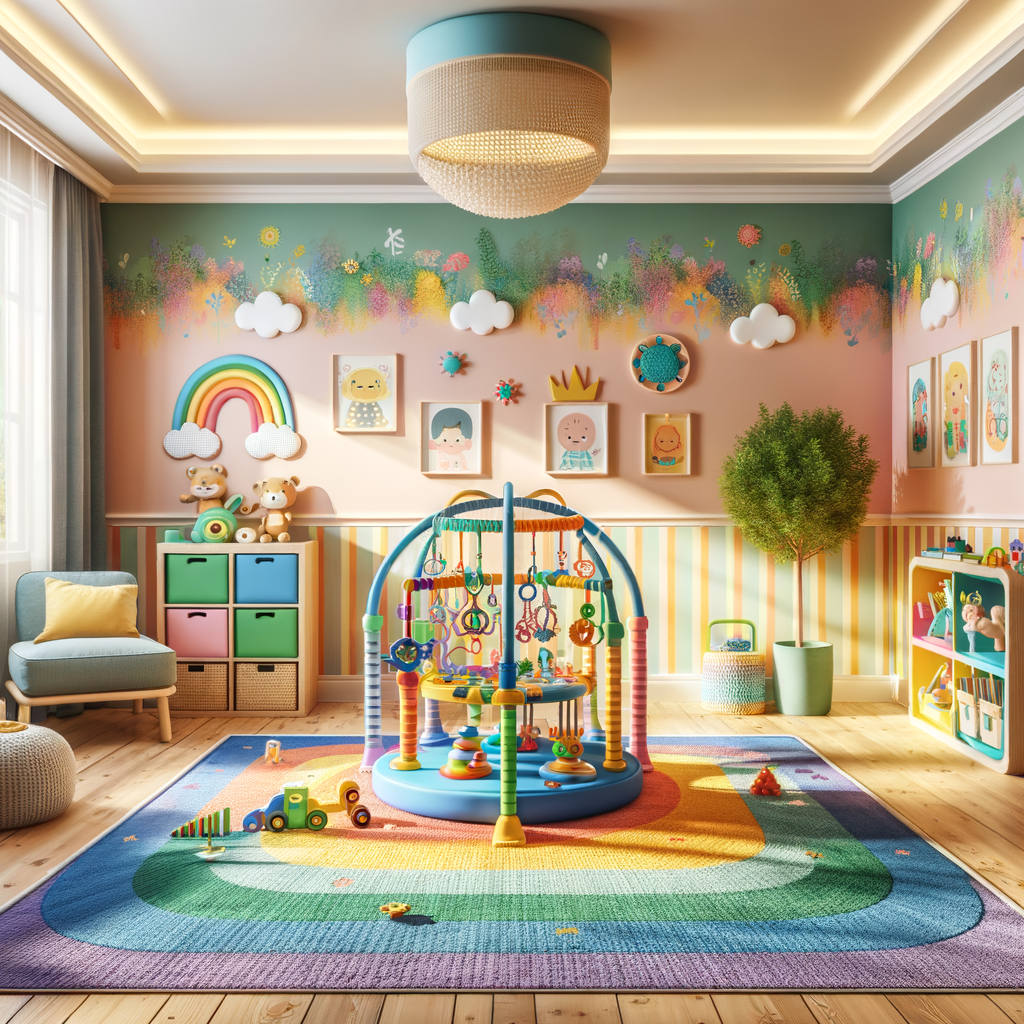
For babies and toddlers just learning to sit, crawl, stand and walk, a play gym provides a safe enclosed space.
Look for gyms with overhead toys that spin or make sounds to encourage tummy time.
Many convert to an activity mat as babies grow.
Floor gyms with arches and toys suspended above motivate crawling in different directions.
integrated mirrors also encourage self-awareness.
Play mats filled with stimulating textures like crinkly paper, tactile shapes and peek-a-boo flaps develop fine motor skills through touching and grasping.
Include mobiles, stuffed toys and teether keys that attach to the gym within baby’s reach as they play independently or with caregivers.
Lay mats on carpeted play areas for maximum fall protection and visual pattern stimulation.
Supervised play in gyms and on mats promotes important physical, cognitive and social emotional developmental milestones for little ones.
A baby play gym or mat offers a contained yet enriching space for infants and toddlers to safely explore movement and sensory play.
Rocking chair
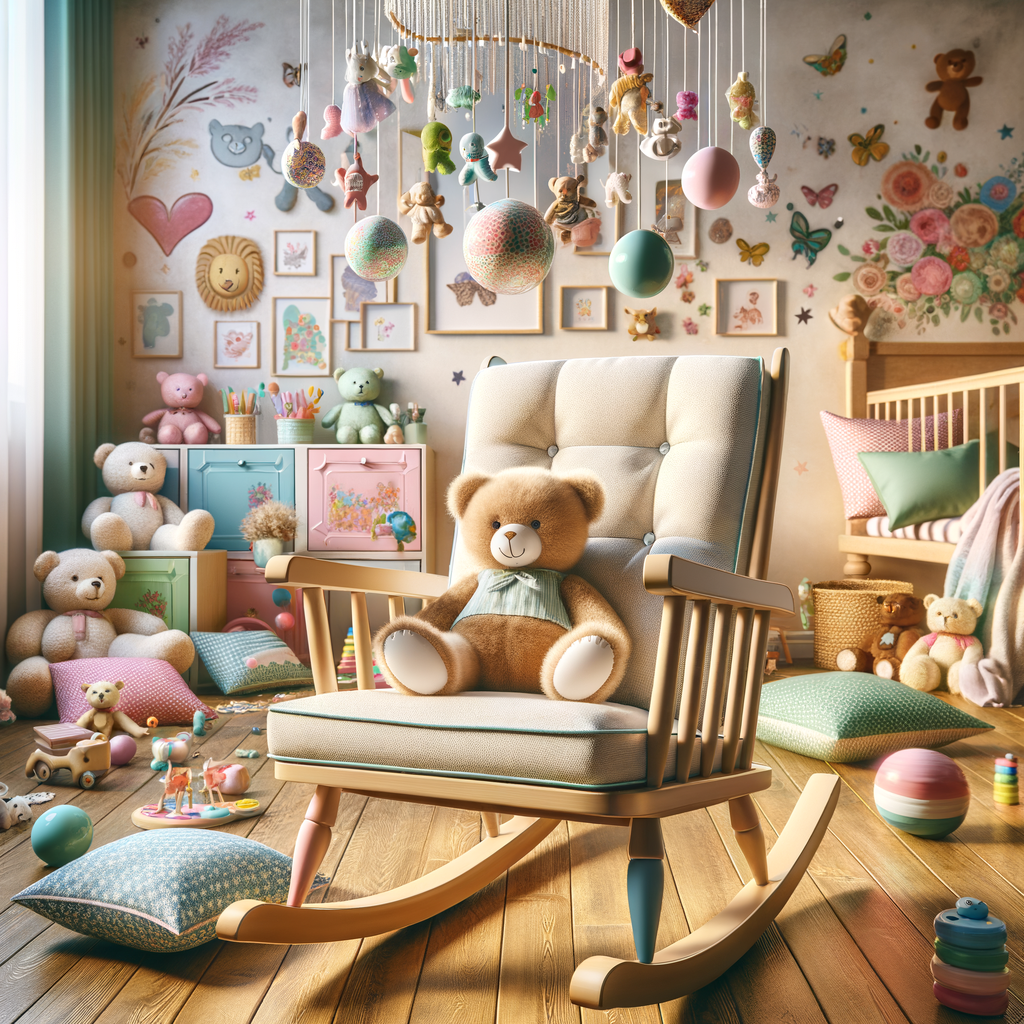
A rocking chair is a classic, comfy seat for reading one-on-one or quiet play.
Look for kid-sized gliders.
Upholstered or wooden rockers provide a warm, nurturing spot for bonding between parent and child.
Curl up together in the chair with books, stuffed toys or quiet toys for learning, story time or just relaxing together.
Keep the space near bookshelves so kids can easily select their own volumes to read with your help.
For older toddlers, place a small table beside the chair to support crayons, paper or small construction toys during rocking sessions.
Let babies in rockers see themselves in a nearby mirror to foster self-awareness during play.
Consider a compact design if space is tight.
Gliders make great additions to reading nooks too for calming solo play.
A rocking chair brings warmth and routine snuggles to the playroom.
Reading or independent play provides developmental benefits too.
Kid-sized accessories
Miniature versions of real-life tools and appliances invite imaginative play.
Look for scaled-down brooms, mops, ironing boards and more.
Toy dishes, pots, pans and utensils that function like the real thing bring dramatic play to life.
Choose pieces made from BPA-free, flexible plastics.
Kid-sized furniture like small tables, chairs and benches encourage independent pretend tea parties and dramatic scenarios.
Dress-up racks or shelves containing hats, bags, jewelry and other costume props ignite imaginative role-playing alone or with friends.
Place plastic grocery and convenience store baskets in the toy kitchen for carrying “groceries” during imaginative shopping trips.
Add realistic details like play cash registers, phones or doctor’s equipment to spark deeper exploration of roles.
Accessories that mimic everyday adult life spark creativity, communication skills and developing interests through symbolic pretend play.
Providing accessories at a suitable scale for small hands empowers kids’ natural desire to roleplay and learn through imitation.
✨Click to Get My 101 FREE Designer Room Ideas
Play silhouettes on wall
Cut out bold, black paper silhouettes of kids, animals, objects, transportation vehicles, etc.
and tape them at toddler height on the wall.
These bold graphic outlines spark shadow play – kids can hold their hands and toys up against the wall to see their shadows.
Shadow play encourages hand-eye coordination, recognition of real-life objects and shapes, as well as early STEAM skills through light, reflection and manipulating toys.
Cut a silhouette tree, puppet theater or other scenes to create a backdrop for even more imaginative shadow puppet play.
Laminate the silhouettes so they last through years of play without fading or wearing out over time.
Change up the wall silhouette assortment every few months to stimulate continued interest and discovery.
Pair shadow play with string lights or a table lamp nearby for optimal shadow-casting at different times of day.
Simple silhouettes offer a low-cost, versatile way for young children to creatively explore their shadows through independent discovery play.
Designated Areas

Carving out distinct zones allows your kids to easily find their desired activity and avoid cluttering other spots.
It keeps play organized and contained.
Common designated areas include a reading nook, arts/crafts station, imaginative play area, science/experiment table, block area, toy storage shelves, and puzzle/game zone.


Define the boundaries of each area through floor rugs, room dividers, furniture placement, or tape outlines on the floor.
This provides clear visual cues for kids.

Rotate the designated activities or toy assortments regularly to keep things interesting.
Leave some open floor space for active play like running, dancing, or practicing balance.
Pad the area with foam tiles or a yoga mat.


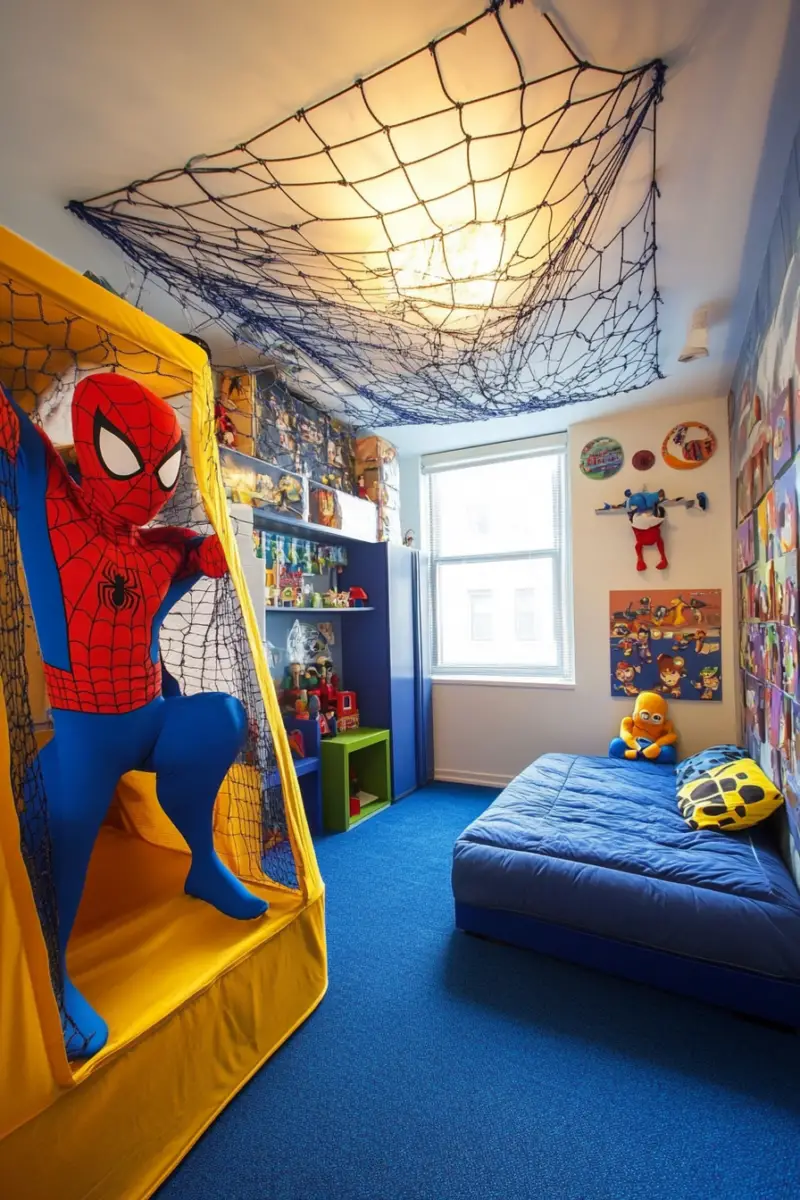
Consider designating an additional quiet space away from active zones, like a window seat with books and soft cushions.
Clearly delineating activity areas helps your kids stay engaged, independent and avoids disputes over workspace.



It creates an organized, stimulating environment for learning through play.

